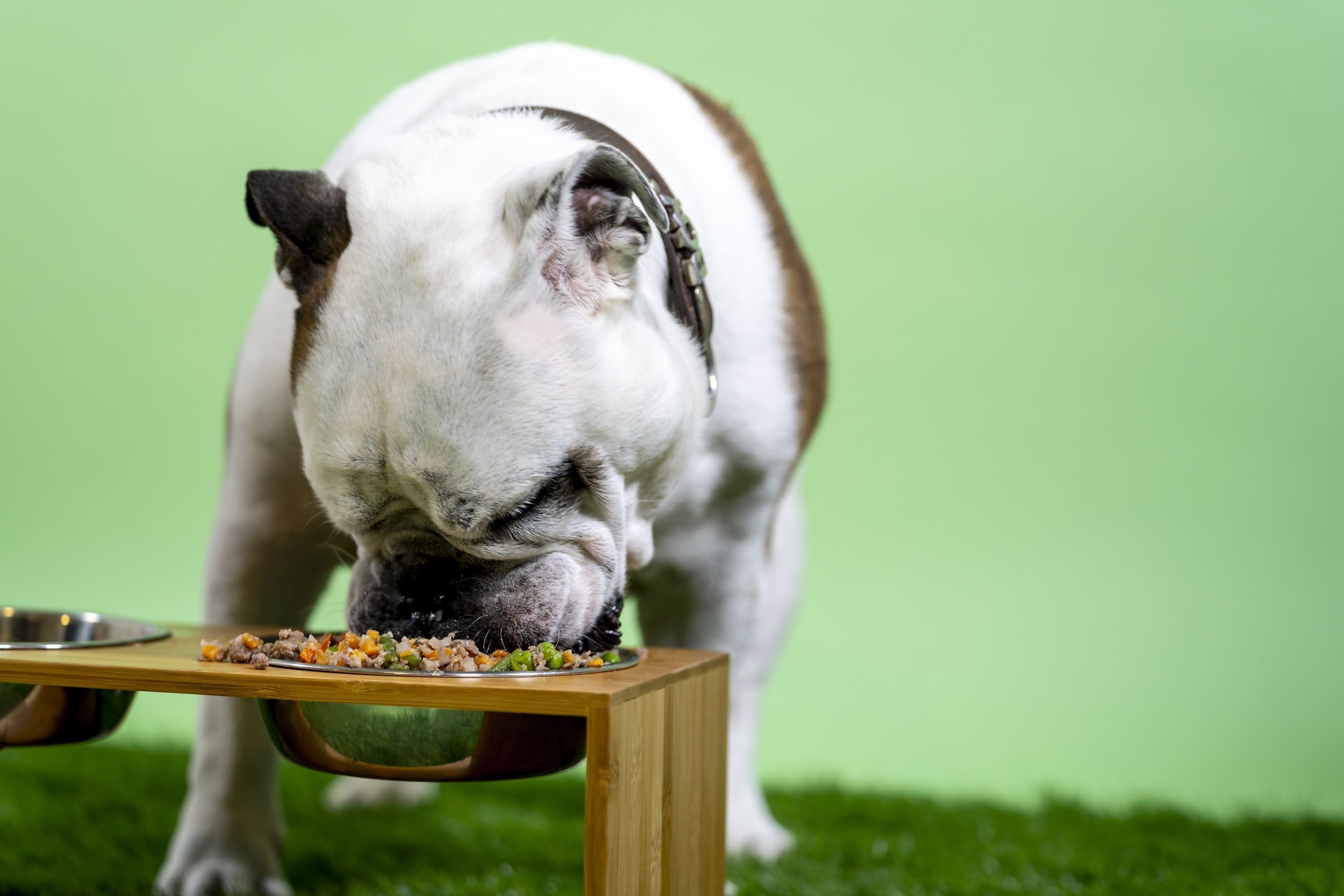
2015 Surveys & Data
2015 Press Release & Summary of the Veterinary Clinic: Pet Obesity Prevalence Survey
Pet Obesity Grows, Veterinarians Call for Industry Changes
(February 2016) Pet obesity continues to be a growing problem, affecting the majority of U.S. dogs and cats. Research conducted by the Association for Pet Obesity Prevention (APOP) found about 58 percent of cats and 54 percent of dogs were overweight or obese in 2015. Veterinarians are alarmed by the steady increase in pets classified as clinically obese and call upon the veterinary industry to add calorie information to pet food labels and standardize medical tools to fight obesity.
“Pet owners deserve to know how many calories are in the pet food they feed their pets.” states Dr. Ernie Ward of Ocean Isle, North Carolina, founder of APOP. “For over six years the industry has been promising to require calorie counts on pet food labels, and for six years they’ve failed to deliver.” Dr. Ward is demanding the Association of American Feed Control Officials (AAFCO), the independent agency largely responsible for advising state agencies on animal foods and guidelines, to implement mandatory caloric information on all pet foods sold in the U.S. “Until we have transparency on pet food labels, it is incredibly challenging for veterinarians to offer accurate feeding recommendations for pet owners. It’s hard to believe it’s 2016 and this basic information isn’t required on all pet foods.”
Trend toward ‘Super-Obese’
The 2015 survey confirms a consistent trend toward more obese pets. “For the past seven years, our surveys have seen the percentage of clinically obese dogs and cats outpace those that need to lose a couple of pounds. Not only are we seeing more fat pets, we’re seeing fatter and fatter pets.” warns University of Minnesota veterinary nutritionist and APOP Board member, Dr. Julie Churchill. “An 18-pound cat is at greater risk of developing diseases such as type 2 diabetes or high blood pressure than one that is a pound or two overweight.”
University of Georgia veterinary surgeon and APOP Board member Dr. Steve Budsberg agrees. “We’re seeing more ‘super-obese’ dogs with devastating knee, hip, and elbow injuries and disease than ever before. Obesity creates tremendous mechanical stresses on bones and joints and that can lead to serious pain and suffering.” Dr. Budsberg notes these problems aren’t limited to dogs. “We’re diagnosing arthritis and joint injuries in obese cats at startling rates.”
Need for Veterinary Standardization
Dr. Ward challenges the veterinary profession to standardize medical terminology and tools for obesity. “APOP is committed to uniting veterinarians with a single set of pet obesity definitions and tools. We are working toward a common professional standard Body Condition Score (BCS) with European colleagues and universal definitions for overweight and obese.”
“There are currently three major BCS scales used worldwide.” emphasizes Dr. Churchill. “We need a single standard to ensure all veterinarians are on the same page. Until we have that, it’s nearly impossible to create additional communication strategies.”
Dr. Budsberg also stresses the need for uniform terminology. “Our profession hasn’t agreed on what defines ‘overweight’ from ‘obese.’ These words have significant clinical meaning and affect treatment recommendations.”
Pet Obesity as a Disease
Many veterinarians feel it’s time to officially designate pet obesity as a disease. “The American Medical Association (AMA) recognized obesity as a disease in 2013. I think the American Veterinary Medical Association (AVMA) should follow suit. By defining obesity as a disease, many veterinarians will take the condition more seriously and be compelled to act rather than ignore this serious health threat.” Dr. Ward stresses. “Additionally, by classifying pet obesity as a medical condition treatable by licensed veterinarians, the pet-owning public will be better protected against potentially harmful products and services making unsubstantiated and dubious claims.”
“I strongly support classifying pet obesity as a disease.” states Dr. Churchill. “I think veterinarians will be encouraged to provide better care and the pet industry will have further incentive to pursue innovative treatments.”
Few Older Obese Pets
The 2015 APOP survey also found that the incidence of obesity decreases with age. “We’ve been saying for a long time: ‘There are many fat pets. There are many old pets. There aren’t many fat, old pets.’ Our research continues to support the fact that obesity is a disease of young-adult to early-senior aged pets.” points out Dr. Ward.
“The reality is obesity kills.” comments Dr. Joe Barges, Academic Director for Cornell University Veterinary Specialists and APOP Board member. “Numerous studies have linked obesity with type 2 diabetes, osteoarthritis, high blood pressure, many forms of cancer, and decreased life expectancy. Our survey validates the notion that obese pets tend to live shorter lives with more medical problems.”
The survey found in pets classified by their veterinarian as overweight or obese, only 16.5% of cats were 12 to 15 years of age and 6.6% over 15. In dogs, only 13.2% were 12 to 15 years old and only 1.1% over 15. The average age of cats in the study was 8.2 years and dogs 6.7 years.
About the Research
The annual obesity prevalence survey is conducted by APOP. Veterinary practices that participated assessed the body condition scores of every dog and cat patient they saw for a regular wellness exam on a given day in October. Body condition scores based on a five-point scale and actual weight were used in classifying pets as either underweight, ideal, overweight or obese. The latest survey included the assessment of 1,224 dogs and cats by 136 veterinary clinics.
About APOP
The Association for Pet Obesity Prevention was founded in 2005 by Dr. Ernie Ward with the primary mission of documenting pet obesity levels in the United States to raise awareness of the issue and its negative impact on pets. The APOP board is made up of veterinary practitioners, nutritionists, surgeons, and internal medicine specialists. APOP conducts annual research to substantiate pet obesity prevalence levels in the United States and offers resources and tools to veterinarians and pet owners to better equip them to recognize and fight pet obesity.
